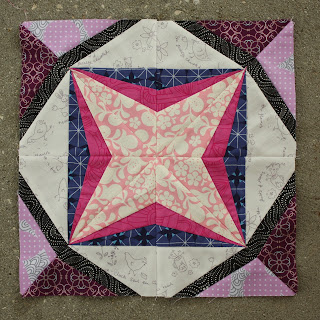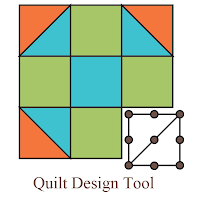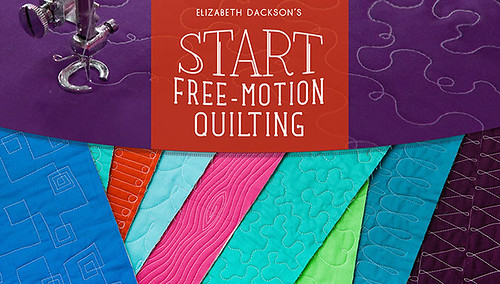String blocks are a great way to use up scraps, and my recent quilt finish,
The Road to Love, incorporated two different kinds of string blocks that made a heart shape when put together. This tutorial will walk you through making one string heart block, which you can then either repeat to create a quilt full of string hearts, or you can use lots of negative space around the heart, like I did. When I make string blocks, typically I choose to use paper as my foundation, as it's easily removable, and I prefer to use standard copy paper or printer paper, as it's cheap, easy to get my hands on, and easily trimmed to the size I need.
String Heart Block
makes one 18 1/2" heart block
You'll need:
~100 strings of assorted widths ranging from 1" - 2", with at least 20 of the strings being at least 5" long
fat quarter of larger of background fabric
(30) 3 1/2" squares of copy paper for paper templates
To create one heart block, you'll be making:
(20) Block As
(10) Block Bs
(6) 3 1/2" background squares
Block A
1) To begin, set your machine's stitch length to ~ 1.5mm. This will perforate the paper you're sewing through for easy removal.
2) Take one long string and fold in half lengthwise, creating a crease with your fingernails at both ends.
Align that crease with the center of one of your paper squares, and use a dot of glue to hold in place, right side up. This is the only string we will place right side up.
3) Next, take another string and align the raw edges with the glued string, right sides together. The string should hang off your paper square slightly. Sew in place, using a scant 1/4" seam. Press the seam over, using a hot, dry iron.
4) Select another string from your pile and repeat step 3, aligning with the new raw edge, and sew in place. Press, and repeat until that side of your square is full of strings and the paper on that side is completely covered.
5) Repeat for the opposite side of the first string, until the entire paper square is covered by fabric.
6) Trim square down to 3 1/2", aligning your ruler with your paper square and trimming away the excess fabric. Remove the paper by folding back and creasing along each seam and pulling at the paper.
7) Repeat steps 1-6 to create a total of 20 string blocks.
Block B
1) Block B is a traditional Roman Stripe block. First, you'll need to cut (10) 3 1/2" squares from your background fabric. Once your squares are cut, on the right side of the block, use a Frixion pen or Hera marker to mark the center diagonal of the square.
Measure 1/4" from that marking, and trim the excess.
Glue this odd triangle to one of your remaining paper squares, taking care to line up the edges.
2) Next, align one of your longer strings right sides together with the raw edge of the odd triangle and sew in place, using a scant 1/4" seam.
3) Press seam over with your fingernail and set with a hot iron. The hot iron will remove your Frixion mark, should any of it be showing. Continue adding strings to this square as we did in Block A until the square is full.
4) Trim square to 3 1/2", aligning your ruler with the paper square, and repeat to create a total of 10 Roman Stripe blocks.
Sewing the Heart Together
1) To create additional movement and visual interest, we'll place the string blocks in such a way that the center of the block creates a herringbone effect. Follow the photo below to place your blocks in the heart shape. Move your blocks around until you're pleased with the layout. You'll notice I've got one square in the fourth row from the top that's out of place.
2) Next, sew each row of blocks together, taking two at a time and pressing the seams open as you go.
3) Join the rows together, press seams open, and you'll have a completed heart on your hands.
Feel free to pin this tutorial! I'm definitely Pinterest friendly :) If you'd prefer to save a PDF copy of this tutorial, you can download one from Craftsy
right here.
I hope you enjoyed this tutorial! If you make something using this tutorial, please be sure to add it to the
Stitching with Don't Call Me Betsy Flickr group.















